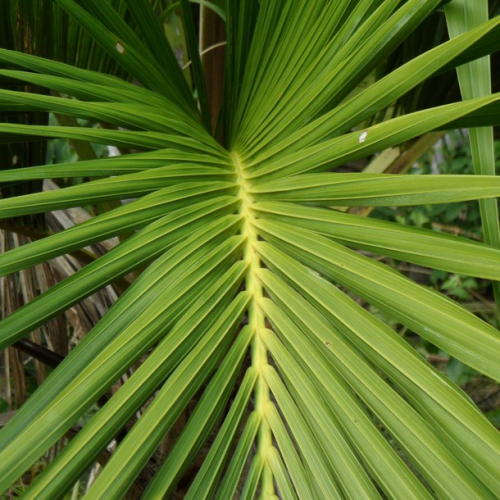Indoor plants Howea

Description
Special Features of Howea
Howea, or Kentia, is an evergreen palm plant. The species Howea fosteriana and Howea belmoreana are best suited to growing in homes and under glass. In the wild, the palm tree grows on the eastern coast of South Wales, Australia, where it can reach a truly impressive height of 12 meters.
Howea forsteriana Kentia is one of the world's most popular ornamental palm trees. In indoor cultivation, its spectacular and unique appearance and perfect survival has deservedly made it a popular houseplant.
Like any other ornamental plants, Howea requires regular care, proper watering and light. However, it is not too capricious and can tolerate low light and humidity, dust, heat, and some degree of neglect. At the same time, Howea brings a tropical feel to your home.
Howea's leaves are dark green at the tip and light green at the base and uniquely shaped. The palm is perfect for both outdoor and indoor cultivation.
The Secrets to Successfully Growing Howea
If you decide to buy Howea, you should know the basic rules of care for this plant.
The palm prefers well-lit areas. However, to provide favourable conditions for growth, avoid long exposure to direct sunlight. In the summer, occasionally move the plant outdoors and let it stay there, including in the rain.
Regular watering is essential for good growth of Howea. At the same time, watering must not be excessive, as soggy soil can inhibit vital functions of the plant. In the hot season, give your palm a warm room-temperature shower. Mist the leaves once or twice a day.
Howea is propagated by seed. Before sowing, abundantly wet the seeds with water. Sow the seeds in February or March at the temperature of about 25 C. Seedlings, depending on the seed quality, appear 2- 12 months later.
Potential Problems
For the successful cultivation of Howea, avoid negative factors that could affect the plant. These factors include poor ventilation, cold drafts, smoke (including tobacco smoke), standing water in the container caused by overwatering, and low temperatures.
Howea does not like stagnant air and drafts. Failure to comply with the care requirements can lead to the drying out and browning of the leaves. Remove dead plant tissue by cutting the leaf tips 2-3 millimeters from the green part of the leaf. Humidity should be at least 50%. In the summer, water the plant 2-3 times a day. Use specific palm fertilizers to make your plant to live longer and look better.
Howea's trunk should always be healthy and sturdy. If you notice any irregularities, delamination, or mechanical damage to the trunk, pay close attention to the problem and consult a plant expert. These symptoms may be indicative of your palm's dying. Howea, in general, requires minimum and very careful pruning, as cuts may cause permanent damage to the trunk and the plant may eventually die.
Howea does not like repotting and should be repotted with caution. Repotting should be done every year in the spring. The soil should consist of 2 parts lightweight clay loam, 2 parts leaf mold, 1 part peat, 1 part decomposed manure, 1 part sand, and some charcoal. For mature trees, topdress the soil in March and late August.
Common pests that affect Howea are scale insects, spider mites, thrips, and mealybugs.
Scale insects suck out tissue nutrients, cause yellowing and wilting of leaves, and make the plant susceptible to dark mildew. To get rid of the pests, wipe the leaves of the plant with a damp cloth soaked in alcohol or an alcohol solution.
Ticks affecting healthy plants can cause some types of leaf spot, foliage damage and suppression of vital functions. Maintain high humidity, thus creating unfavourable environment for pests.
Applying special insecticides and drugs and a proper care can significantly reduce the risk of damage to your palm.
If you purchase Howea, you will surely be able to meet your wildest expectations and unlikely to ever be disappointed with your choice. This is evidenced by the feedback from those who have dared to buy the plant.







 5 350
5 350








